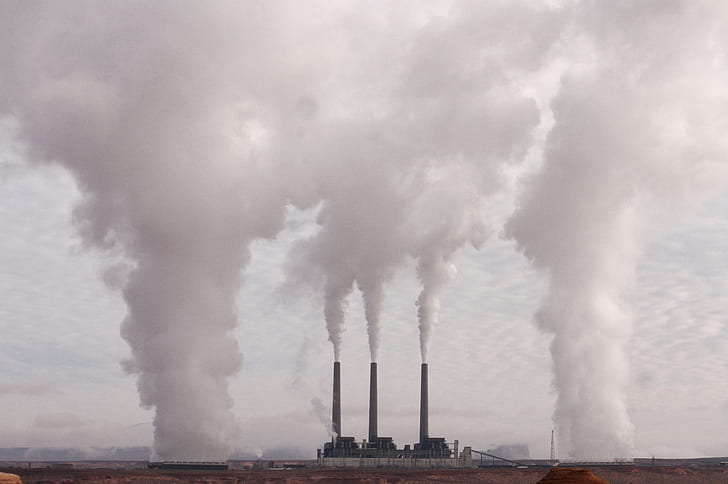Biden’s Proposed Power Plant Rule is a Solid First Step
The electric power sector remains 30 percent of the nation’s carbon dioxide emissions, and this rule can incentivize the push towards renewables.

On May 23, the Environmental Protection Agency (“EPA”) proposed emission limits and guidelines for carbon dioxide from fossil fuel-powered plants. To avoid the same fate as the Obama Administration’s Clean Power Plan, which was struck down by the conservative Supreme Court in West Virginia v. EPA last year, the new draft rule does not determine emission limits based on “generation shifting,” or the closure of fossil fuel-powered plants in favor of cleaner sources of electricity. As my colleagues and I have explained, generation shifting is an ordinary consequence of pollution-control rules and is the easiest, cheapest, and best way to reduce carbon dioxide emissions from fossil fuel-powered plants. But in an effort to skirt legal challenges, the new rule bases its limits largely on carbon capture and sequestration (“CCS”) and hydrogen co-firing such that individual power plants are able to continue operation if they adopt the appropriate control technologies. That does not mean, however, that states and utilities are similarly constrained from generation shifting as they develop ways to comply with the federal regulations.
Still, the fact that this draft rule follows the passage of the Inflation Reduction Act of 2022 (“IRA”) has enabled the EPA to be relatively stringent. The Clean Air Act requires that the EPA’s emission limits be based on the best system of emission reduction adequately demonstrated and accounting for cost, among other things. The IRA has made tax credits for CCS more accessible and generous, bolstering EPA’s case that the technology is adequately demonstrated and cost-effective. Finding that the best system of emission reduction is CCS (and hydrogen co-firing) rather than the next-best option allows the EPA to require certain types of power plants to reduce carbon dioxide emissions by 90 percent over a number of years. The biggest exception is for those plants that choose to run only part-time, so-called “peaker plants” that turn on when electricity demand is too high for the grid.
The draft rule has, of course, already encountered criticism. In addition to those arguing about feasibility and cost, environmental justice groups have also voiced hesitation about the two new technologies. Most existing fossil fuel-powered plants have been sited in environmental justice communities that have historically borne the brunt of emission burdens; although these technologies will reduce carbon dioxide emissions in the long-term, they will also enable plants to continue operating in these neighborhoods. While carbon dioxide itself does not have reported health impacts, other pollutants from these plants—sulfur dioxide, nitrogen dioxide, particulate pollution and mercury from coal and nitrogen oxides from gas—do. Fenceline communities will continue to face harmful health impacts from this pollution, even if greenhouse gas emissions decline over time.
Environmental justice advocates have also characterized CCS and hydrogen co-firing as unproven technologies; EPA highlights the current use of CCS at the Boundary Dam coal-powered plant in Saskatchewan, Canada in particular to illustrate the technology’s viability, although its use is not widespread. While new technology that has not been widely adopted can still meet statutory criteria under the Clean Air Act, the EPA bears a responsibility to continue to engage with environmental justice communities, which have historically been overlooked by regulators. As the rule is in its draft stages, ongoing outreach to and involvement by environmental justice communities may lead to important modifications.
With regards generation shifting, states will have greater latitude than the federal government to force dirty power plants to close. States ultimately get a fair amount of discretion to determine how to meet federal targets for existing sources of pollution—and that includes existing power plants. For example, California will likely continue regulating the power sector through its cap-and-trade program (although cap-and-trade has had its own rocky relationship with environmental justice groups). States will have several years to prepare their implementation plans to meet these federal targets, and advocates can and should champion solutions that the most-affected communities would prefer.
What states cannot do is fail to meet the federal targets entirely, which is why the stringency of the draft rule is so critical to ensuring the entire county rapidly decarbonizes. And with that in mind, the draft rule is almost as stringent as it needs to be, while staying within the boundaries set by West Virginia v. EPA. But like any draft rule, the new proposal can be improved and public comment is open until August 8th. Among already submitted comments are valuable ways the EPA can increase the stringency of the regulation. The New York State Attorney General’s Office, for example, submitted testimony urging the EPA to (1) speed up coal-fired power plant retirement, only allowing those truly necessary for grid reliability to become peaker plants and (2) lower the emission limits for gas-fired power plants to further reduce pollution. The EPA may also consider implementing faster timelines generally to account for the drastic action climate change demands.
And even with its hands tied by the Supreme Court, the Biden Administration still has avenues to reduce co-pollutant emissions outside of this rulemaking. The EPA can, and must, separately regulate co-pollutants with dangerous local health effects. In fact, the EPA has proposed a review of NOx emission standards for gas plants in response to litigation by the Environmental Defense Fund and the Sierra Club. The EPA should ensure that standards for other pollutants are up-to-date to safeguard communities in states that chose to rely on CCS and hydrogen co-firing rather than closures of fossil fuel-powered plants.
Ultimately, the draft rule is a definitive step towards reducing greenhouse gas emissions and mitigating the impacts of climate change. The electric power sector remains about 30 percent of the nation’s carbon dioxide emissions, and this rule can continue to incentivize the push towards renewables that has occurred even in the absence of federal regulations. And this shift away from fossil fuels benefits us all; the climate crisis has brought increased health and safety risks to everyone, but particularly to vulnerable individuals and communities. This draft rule with stringent emission limits that is nevertheless poised to withstand legal challenges is therefore critical to ensuring a safer, cleaner, healthier future.
Reader Comments
One Reply to “Biden’s Proposed Power Plant Rule is a Solid First Step”
Comments are closed.







Not…Nearly…Enough: EPA’s Proposed Power Plant Greenhouse Gas Rule
Published August 9, 2023
By Dan Galpern
https://cprclimate.org/not-nearly-enough-epas-proposed-power-plant-greenhouse-gas-rule/